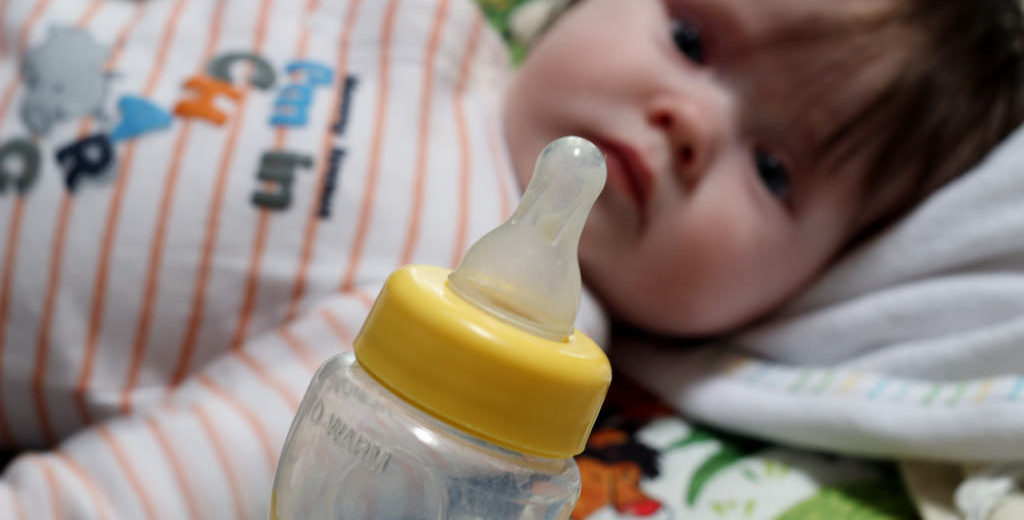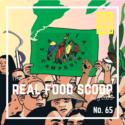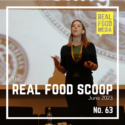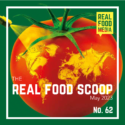by Anna Lappé
It’s something of a truism to say that there are two Americas when it comes to food: the ample aisles of posh Whole Foods in wealthy neighborhoods and the corner stores brimming with Doritos and Coke in poorer communities. But there are also two nations of food when it comes to what the W.K. Kellogg Foundation and other advocates call “first food,” or breast milk. In one, women are supported to nurse — by their hospitals, workplaces and communities. In the other, it’s exceedingly hard for women to do so. But there doesn’t have to be such a divide.
The benefits of breastfeeding—and the risks of not doing so—are now well documented. According to the Office of Disease Prevention and Health Promotion, “Breast milk is widely acknowledged as the most complete form of nutrition for infants, with a range of benefits for infants’ health, growth, immunity and development.” Breastfeeding also lowers the risk of breast cancer for mom, and provides a free source of nutritious food. As the World Health Organization states: “Exclusive breastfeeding reduces infant mortality due to common childhood illnesses such as diarrhea or pneumonia, and helps for a quicker recovery during illness.”
The WHO recommends exclusive breastfeeding until 6 months followed by continued breastfeeding “along with appropriate complementary foods up to two years of age or beyond.” That’s the ideal. But in the United States, that’s not the reality for most babies. Centers for Disease Control and Prevention data show that last year, only 43 percent of infants were exclusively breastfed at three months, and just 22 percent exclusively through 6 months. The rates vary along race and class lines: Though the gap between black and white breastfeeding initiation rates has narrowed, it was still 16 percentage points in 2008.
Breastfeeding advocate Kimberly Seals Allers, whose forthcoming book “The Big Let Down” analyzes the social, economic and political influences of breastfeeding culture, focuses on the phenomenon of “first food deserts” — the idea, as she explained by email, “that place matters. There are many places across the country lacking access to the resources and the culture for babies to receive their most nutritional food: breast milk.” Passing policies to regulate baby feeding companies, promoting educational campaigns and changing workplace norms would help reduce the prevalence of these “first food deserts” and narrow the gap on breastfeeding rates along race and class lines.
Improving the rates for breastfeeding is particularly hampered because we still have no federal policy for maternity leave in the United States. No one should be shocked that it’s challenging for mothers to exclusively breastfeed their babies when 1 in 4 of them return to work within two weeks of childbirth, as an In These Times report by journalist Sharon Lerner found. Plus, many women return to workplaces hostile to breastfeeding: few or no breaks allowed for pumping, for instance, and no clean, comfortable place provided to do so. (Moms I know like to trade snapshots of the most ridiculous place they’ve pumped: Bathroom floors and janitor closets top the list.)
Another important factor is the lack of essential support. The CDC reports that without hospital support, 1 in 3 mothers stop breastfeeding. I know first-hand, because I’m one of those moms who needed help — a lot of it. When my first daughter was born, I came home from the hospital with naïve confidence in my breastfeeding capabilities, confidence that quickly turned into desperation. My daughter couldn’t get her latch right; to relieve the searing pain, I tried everything from frozen cabbage leaves to soaked tea bags, but nothing helped. Combined with sleep deprivation and a bout of mastitis, those first weeks were tough. Thankfully, I didn’t have to return to work right away and could afford to pay a private lactation consultant. Even with this support, it was hard; I almost gave up. But I persevered and after a few weeks, my daughter and I got the hang of it. For the next 12 months I had an easy, free source of healthy food.
Breastfeeding advocates such as Allers have been working to make this support more common, especially in the African-American community. “Black women have consistently the lowest rates of initiation and duration,” Allers said. As project director of The First Food Friendly Community Initiative, she works to improve community support and create a national standard and accreditation for breastfeeding-friendly communities.
She has also worked with WIC offices in many states. (WIC is the government program providing supplemental food, nutrition education and more for low-income pregnant women and at-risk infants and children). “WIC is a powerful influencer,” Allers said, in part because it is the largest purchaser of formula in the country and women on WIC can get government-subsidized formula. While WIC receives funding to provide breastfeeding education, the programs vary by state. Allers’ goal is to counter the influence of infant-formula marketing by developing multi-pronged, community-partnered interventions and creating new ways of communicating about breastfeeding in communities of color.
Addressing the pernicious influence of baby-formula companies is another key to improving rates of breastfeeding. Today, many hospitals in the U.S. still send women home with bags of free formula samples, something advocates like Allers is trying to change. “These companies continue to find ways to insinuate themselves into hospital culture,” Allers said. “That’s the part that needs to be cleaned up first: We know a mother’s first job is to feed her baby and that happens at the hospital. What we want is to have true choice, not the illusion of choice.”
Support for breastfeeding looks very different in other industrialized countries. Baby feeding companies are banned from giving out free formula samples or marketing in hospitals from Norway to Mexico, a move supported by advocates like Patti Rundall, policy director at Baby Milk Action. Her organization is part of a global network in 168 countries that’s working to stop misleading marketing by the baby-feeding industry. Advocacy groups in the U.S., such as Ban the Bags, are working to change hospital policies to prohibit the formula company practice of giving new moms free samples in the hospital. As Marsha Walker of Ban the Bags explains, making sure baby feeding companies are not reaching women in hospitals is key: “Exclusive breastfeeding at hospital discharge is predictive of continued exclusive breastfeeding when the mother is discharged,” she explains.
To date, three states—Rhode Island, Massachusetts and Delaware—have eliminated commercial formula bags in all their birthing hospitals thanks to strong advocates. “Hospitals should be marketing health and nothing else,” Walker says. “Distribution of the bags by trusted hospital sources imply that the use of the brand-name formula is recommended and supported by the hospital and the nursing staff that hand them out.”
I hold out hope that if my daughters have children and choose to breastfeed, they will have an easier time of it: that for this next generation maternity policies will have changed, that all hospitals will have banned marketing infant formula and that support for breastfeeding women will be more commonplace. These changes will help foster an environment in which mothers will be supported, not thwarted, in their efforts to nurse their young.
First published in Al Jazeera America
Photo by Bradley Gordon/Flickr




